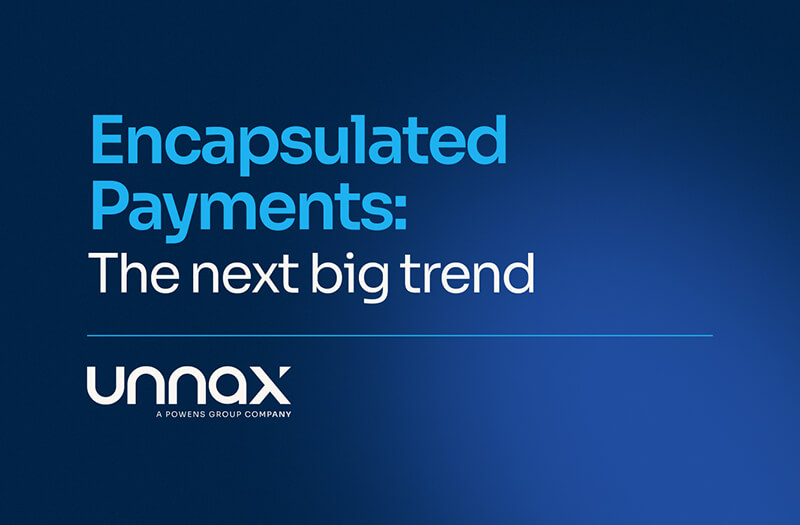While the past year might have been grim for many parts of the economy, the financial services industry is entering into a sort of renaissance. With assistance from the growing Open Banking movement, practically all industries can now offer a wide range of bank products directly to their customers.
In part one of our series on embedded financial services, we’re covering its basics, some of its key benefits, and why everyone should be paying attention to it.
What is embedded finance?
Despite the complicated moniker, embedded financial services -also called “invisible banking” — is a fairly clear-cut process.
Traditionally, financial services such as payments, lending, and insurance were the exclusive purview of banks. After all, banks are highly regulated entities, and, for the longest time, these institutions built their own custom tech stacks. Together, these realities made it practically impossible for banking services to leave the bank’s gated walls.
The Open Banking movement and its supporting regulations like PSD2 have effectively broken down those barriers. Today, banks, fintechs, and other regulated entities can connect non-finance companies to their platforms via APIs.
In turn, firms from practically every industry imaginable can now incorporate banking products embedded directly onto their own platforms.
While we’ll cover some of the use cases in our next segment, here are a couple of quick examples to give you an idea of what we’re talking about.
- An e-commerce retailer adds a payment financing option at checkout.
- An “e-wallet” for a gig economy platform enables both consumers and providers to exchange money directly via the app.
- A real-estate platform offering renter’s insurance to new tenants
As you can imagine, the possibilities are practically endless.
From a regulatory perspective, these companies have little to worry about. Instead, the regulated entity — be it a bank or a fintech — deals with these tedious yet crucial details.
These include maintaining the appropriate licenses, staying compliant with relevant legislation, safely holding client deposits and operations.
From a user’s perspective, embedding financial services into a platform follows the standard operating procedures for working with APIs. Once the product manager defines what they want to build, developers only need to code the relevant snippets in harmony with the UX designer’s vision.

The importance of Embedded Financial Services
Embedded financial services will re-write the way companies on both sides of the equation think about doing business. Here’s a quick rundown of how everyone benefits.
For banks and other financial institutions
Thanks to a few powerful forces over the past decade, retail and corporate banking have become commoditized.
Interest rates plummeted steadily, impacting the balance sheet as well as the attractiveness of savings accounts. As a result, institutions dropped many of their fees, hoping to bring or keep new clients to upsell them later. Finally, digital-first fintechs started to chip away at the lucrative millennial market.
These forces make it clear that traditional banks and financial institutions need new channels to sell lucrative lending and insurance products. Embedded financial services provide them with exactly that.
For e-commerces, travel companies, the gig-economy, and beyond
In many ways, banks have it easy. After all, the high barriers to entry insulate them from fast-moving competitive forces. Most other businesses aren’t so lucky.
Cut-throat industries that sell online or constantly try to one-up earlier entrants face fierce competition from other disruptors.
For them, survival depends on the differentiation of both their products and their revenue stream. Embedded financial services quickly make that possible, enabling new revenue streams, improving user experience, and enhancing brand loyalty.
The data windfall
While each side has its own reason to embrace invisible banking, both can benefit handsomely from the valuable financial data it generates. As we’ve written before, financial data is one of the most potent digital resources available.
By embedding financial services, both banks and the companies deploying them can learn valuable information about their users, making lending and insurance-writing more efficient while enabling providers to provide more targeted services.
The more data there is, the more efficiently this process works. In this sense, embedded financial services act as revenue drivers and not just a compliment.
Why you should be paying attention to embedded finance
Embedded finance will undoubtedly be one of the hottest trends in both the financial services world and the economy in general over the next coming years. Indeed, famed Silicon Valley VCs Andreessen Horowitz recently noted that embedded finance could “potentially 5x the revenue per customer.”
Therefore, understanding how it works not only makes for insightful reading but becomes a ‘must’ for any product manager or innovator looking to significantly expand their product offering, enhance the user experience, and grow their bottom line.
Stay tuned for part two, where we’ll look at some of the most transformative use cases of embedded financial services in action!










